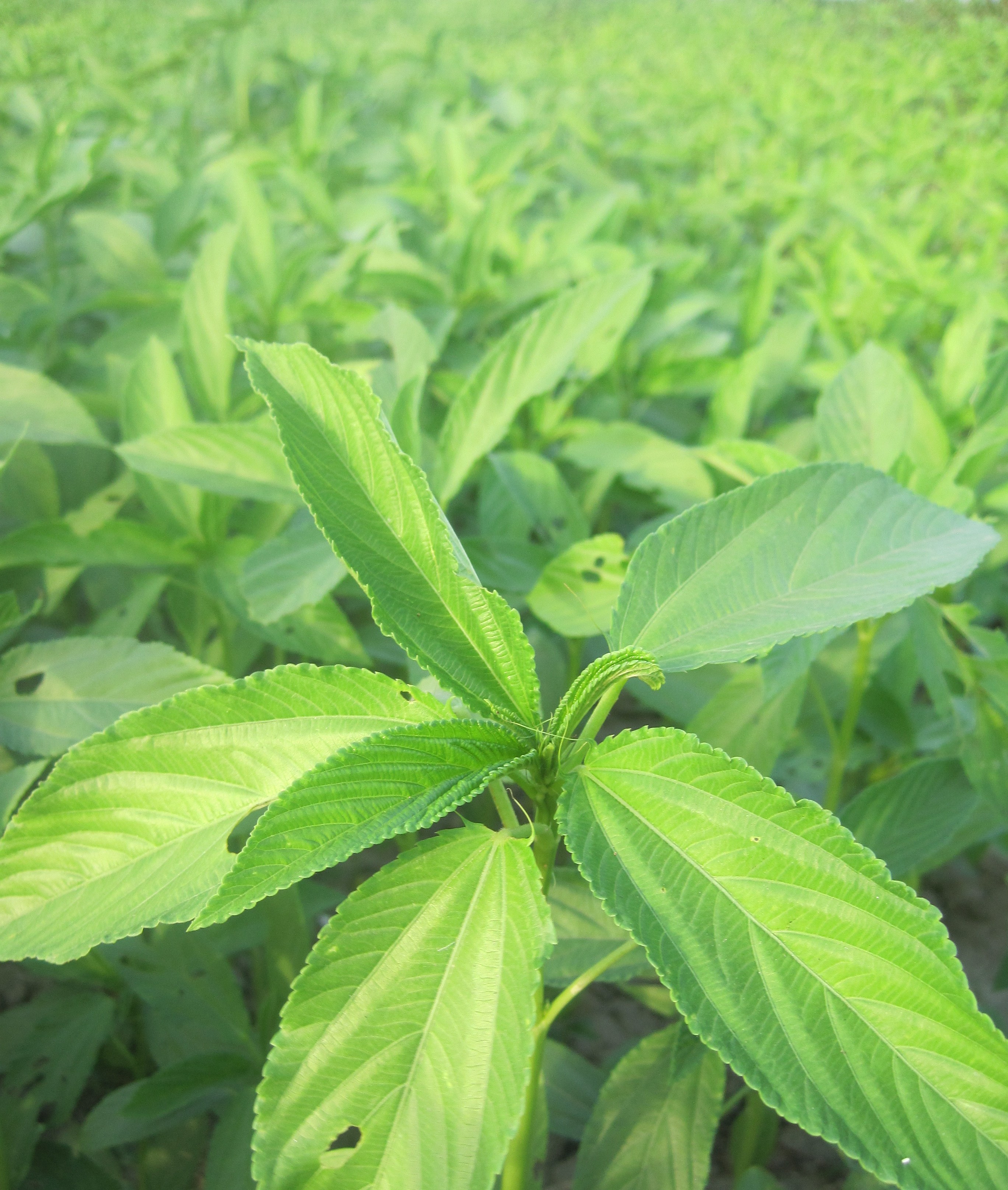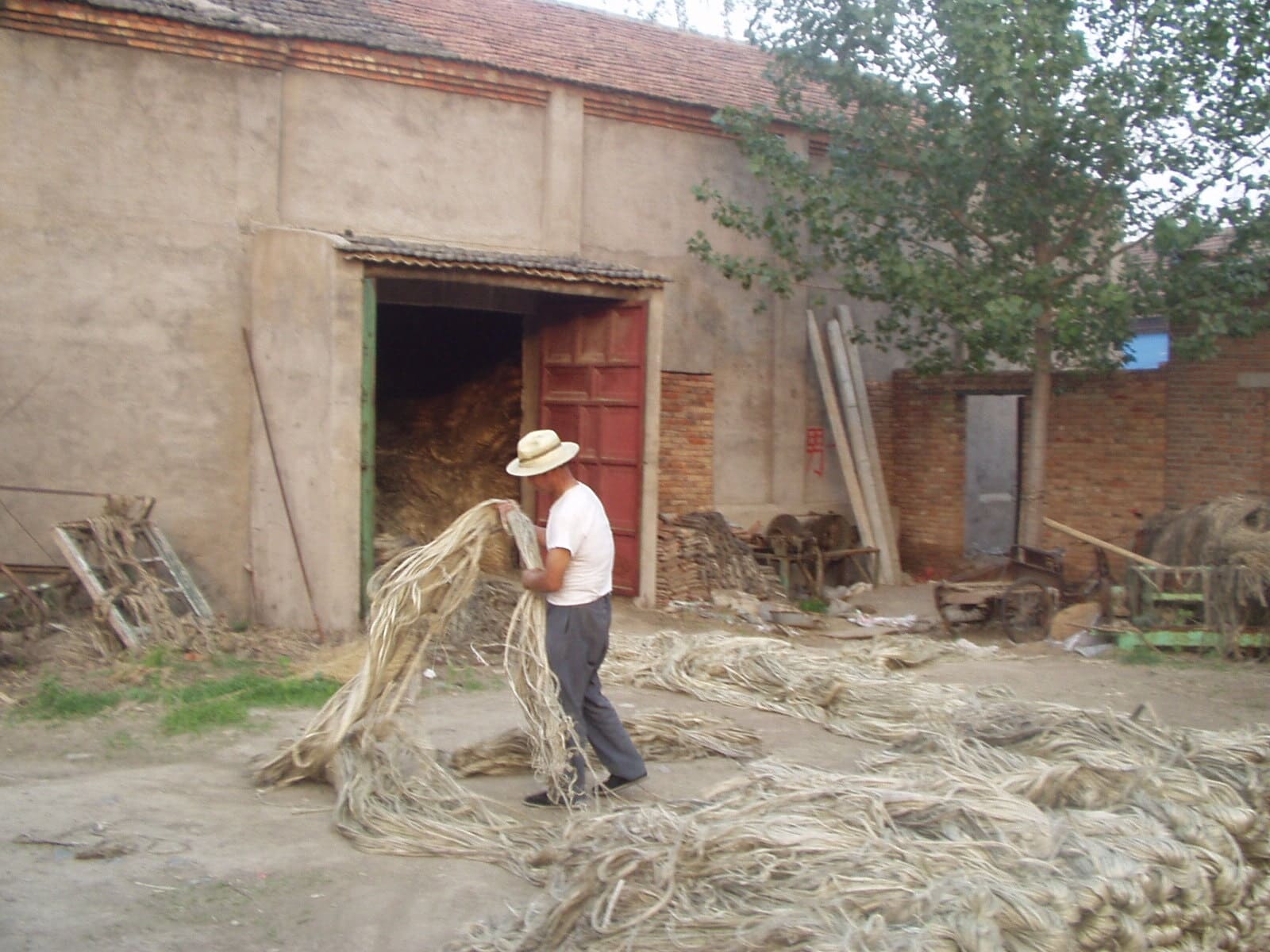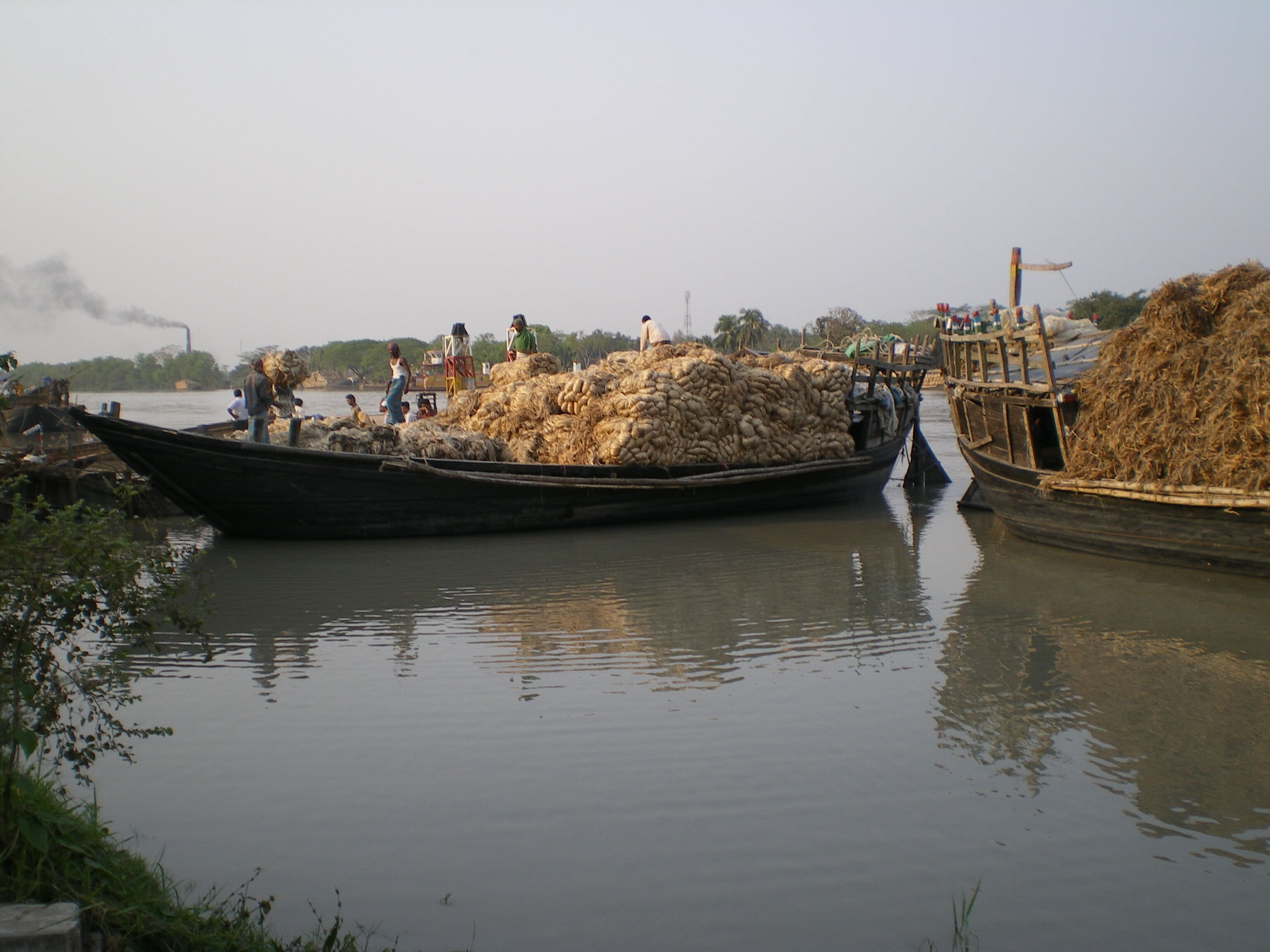Jute
The term “jute” refers to the bast fibres of several species of Indian Corchorus, which belong to the linden family. Stalk length or fibre length is approx. 1.50 to over 3 m. The outer appearance resembles an enormous weed.
Following the harvest, jute fibres are roasted for 20 days, then podded by hand, washed in running water and then dried. Jute fibres are completely biodegradable and have a silky and golden sheen (that is why jute is often called the “golden fibre”).


Jute Fibres can also be distinguished by their high tear-resistance and elasticity. A distinction is made between white and Tossa jute. Tossa jute is somewhat firmer and yellow-reddish in colour due to the stronger lignification. Jute is mostly cultivated in the Ganges Delta where there are optimal conditions for growth due to annual flooding, and can be cultivated virtually without any fertiliser and plant protection.
Jute was initially known as a vegetable for cooking and as a multi-purpose fibre for domestic farming in the Asian region. The stalk rind of these plants was successfully processed for the first time in the Scottish city of Dundee during the first half of the 19th Century. This led to jute gaining worldwide recognition as a fibre supplier.
In addition to cotton, it continues to be the most important natural fibre to this day. It is used to make one of the oldest traditional packaging materials, since it has the optimum properties for packaging raw products and at the same time is extremely environmentally friendly. Today, approx. 12 million small holders worldwide make a living from cultivating Corchorus plants, from which jute is extracted.

